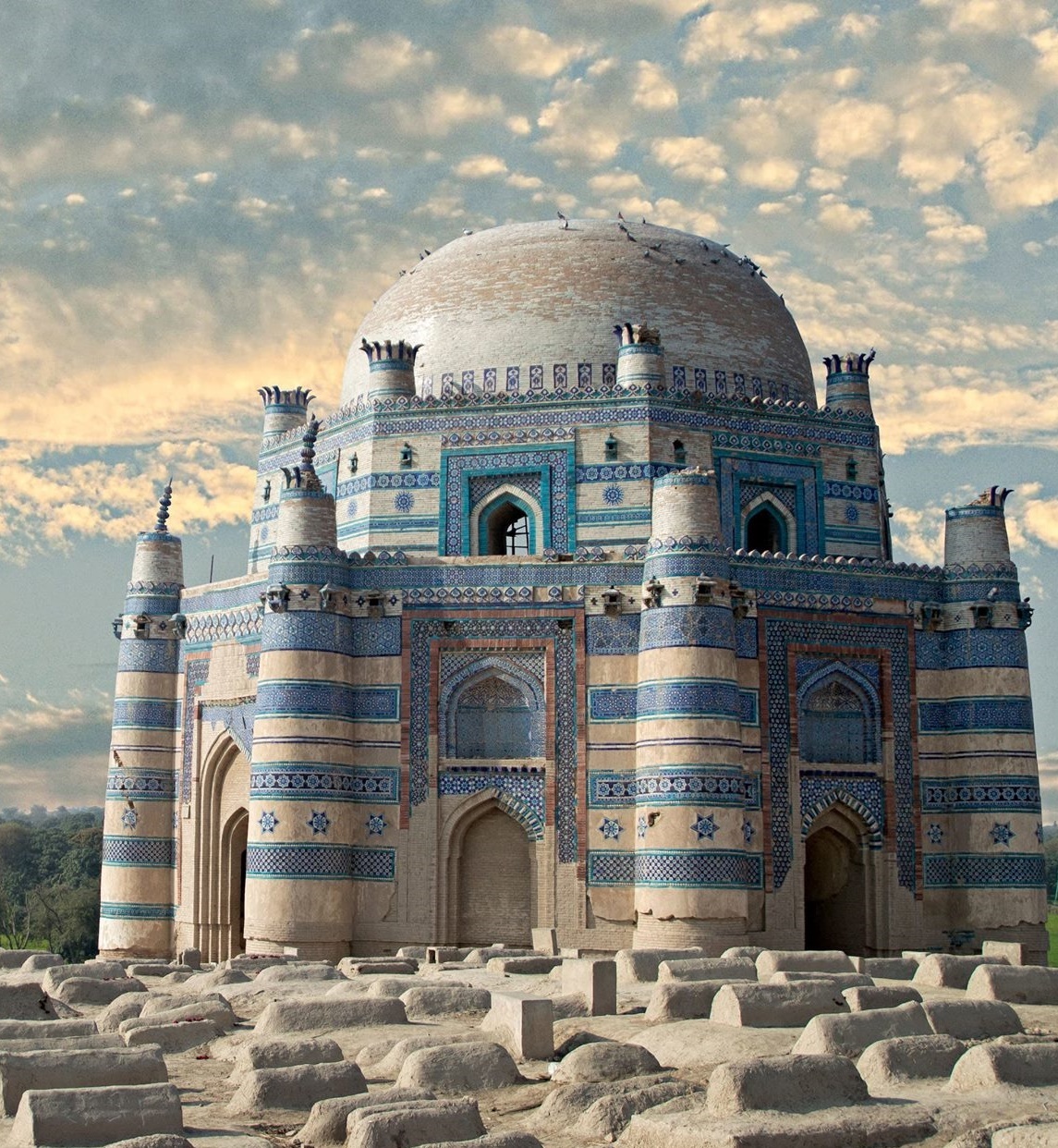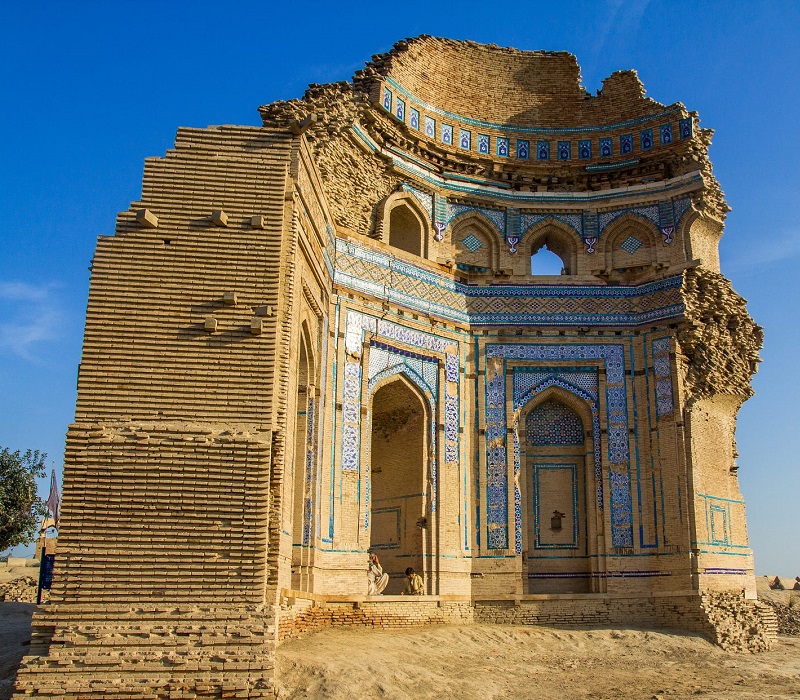Know About the History of Uch Sharif?
City of History
The Uch is known for its ancient history. Near to 4000 BC when the Aryans arrived here. The Aryans named this city on one of their goddesses “the Ushas”. Later, the city name was changed from Ushas to Uch. During the dynasty of Achaemenid Empire of Persia, the city is governed by the Empire of Persia in the 5th and 4th Centuries BC.
After that, Alexander – The Great built a new city on a land near the joining point of Indus and Sutlej rivers and named that city as “Alexandri a-Ussa”. Due to changing course of Indus river it is not verifiable, but some traces are found to support this theory. The city was also controlled by Greeks, Mauryans, the Parthian and followed by Kushans. After this, the city was under negligence for thousands of years until the rule of Muhammad Ghauri in 1175AD.
The city “Uch” has seen its golden era during the governorship of Nasir Ul Din Kabachha. The city was full of architectural buildings, center of knowledge for many scholars. The city was visited by Sufi Saints and some of them settled there. In this time, there was Firozi College was built in the city which could admit more than 2000 scholars at once.
The city saw many eras and rulers. At the time of Dehli Sultan, Shamsuddin Iltamish, the city came under the control of Delhi Sultanate after weakening the Kabachha’s forces. In the late 15th century, Langha tribe ruled this region independently and later by Arghuns and Mughals. Mughals rulers flourished the beautiful monuments that are the symbols of “Uch” city. Many of shrines of Saints were built during Mughal’s time.
Uch remained a part of the Bahawalpur State until it joined Pakistan after Partition. After the merging into the Pakistan, the city is under negligence and city is not getting attention from Government for sake of development and maintenance.
The Enigmatic Charm of Uch Sharif: A Journey through History and its Current Situation
Nestled in the heart of Pakistan’s Punjab province, Uch Sharif stands as a testament to the rich historical tapestry of the region. Steeped in legends and brimming with cultural significance, this ancient town carries the weight of centuries of civilization. From its religious heritage to its educational institutions and political importance, Uch Sharif has left an indelible mark on the annals of history.
To delve into the historical background of Uch Sharif, one must trace its roots back to antiquity. The town’s origin dates back to the early Islamic period when it was known as “Alif Khan Jo Goth.” However, its true significance began to emerge in the 13th century when the city became an important center of learning and spirituality.
Uch Sharif rose to prominence under the rule of the Delhi Sultanate and became a hub of Islamic education and scholarship. It was during this time that renowned Sufi saints, scholars, and poets flocked to Uch Sharif, making it a renowned seat of knowledge and spiritual enlightenment. The town earned the title of “Qalanderabad” due to its association with the revered Sufi saint Hazrat Jalaluddin Surkh-Posh Bukhari, who is said to have spent considerable time there.
Religious institutions flourished in Uch Sharif, with numerous mosques, shrines, and madrassas dotting the landscape. The mausoleums of prominent Sufi saints, such as Hazrat Bahauddin Zakariya, Hazrat Jalaluddin Surkh-Posh Bukhari, and Hazrat Jalaluddin Bukhari, became sacred sites attracting devotees from far and wide. These spiritual centers not only served as places of worship but also as centers for intellectual discourse and cultural exchange.
The educational legacy of Uch Sharif extends beyond religious studies. The town became renowned for its centers of learning, drawing scholars and students from various disciplines. Persian literature, Islamic jurisprudence, philosophy, and astronomy flourished in Uch Sharif’s institutions of higher learning. The renowned Persian poet and scholar Sheikh Saadi Shirazi is said to have visited the town and composed some of his timeless verses there.
Uch Sharif’s political importance cannot be overlooked either. The town served as a strategic center during different periods of history. It witnessed the rise and fall of various dynasties, including the Delhi Sultanate, the Tughlaqs, the Mughals, and the local Nawabs. Its proximity to the Indus River and its geographical location made it an attractive stronghold for rulers vying for control over the region.
In modern times, Uch Sharif retains its historical charm while adapting to the needs of the present. The town’s architectural wonders, including ancient mosques, tombs, and ruins, continue to captivate visitors with their intricate craftsmanship. The Uch Sharif Fort, originally built during the Delhi Sultanate era and later renovated by the Mughals, stands as a testament to the town’s historical significance.
Despite its rich heritage, Uch Sharif faces various challenges in the present day. The preservation and restoration of its historical sites require concerted efforts from the government and preservation organizations to ensure their longevity. The promotion of tourism, both domestic and international, can play a pivotal role in revitalizing the town’s economy and preserving its cultural heritage.
Efforts have been made to establish educational institutions that carry forward Uch Sharif’s legacy of learning. Schools, colleges, and universities have been established to provide quality education to the local population, equipping them with the tools they need to thrive in the modern world while preserving their cultural identity.


